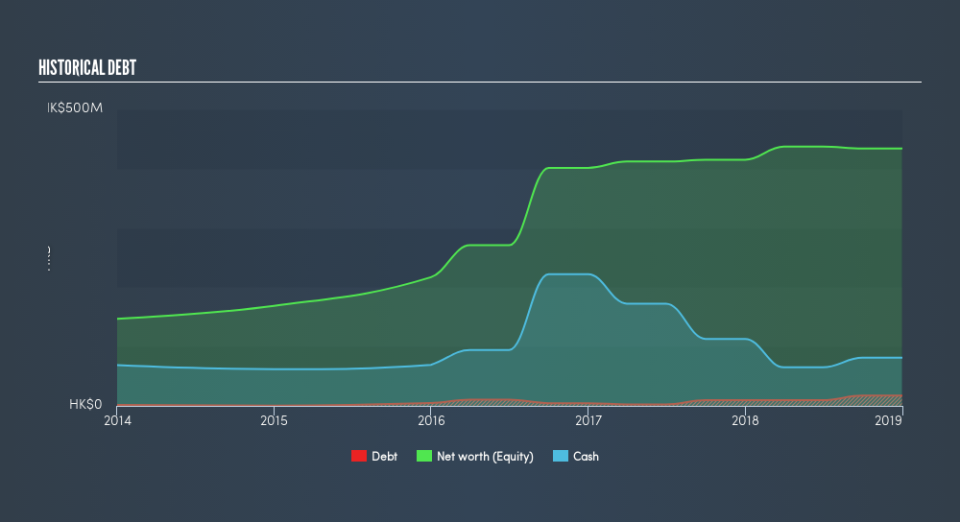Is Vincent Medical Holdings (HKG:1612) Using Too Much Debt?

Legendary fund manager Li Lu (who Charlie Munger backed) once said, 'The biggest investment risk is not the volatility of prices, but whether you will suffer a permanent loss of capital.' When we think about how risky a company is, we always like to look at its use of debt, since debt overload can lead to ruin. We can see that Vincent Medical Holdings Limited (HKG:1612) does use debt in its business. But is this debt a concern to shareholders?
Why Does Debt Bring Risk?
Debt assists a business until the business has trouble paying it off, either with new capital or with free cash flow. Part and parcel of capitalism is the process of 'creative destruction' where failed businesses are mercilessly liquidated by their bankers. However, a more common (but still painful) scenario is that it has to raise new equity capital at a low price, thus permanently diluting shareholders. Of course, plenty of companies use debt to fund growth, without any negative consequences. When we examine debt levels, we first consider both cash and debt levels, together.
Check out our latest analysis for Vincent Medical Holdings
What Is Vincent Medical Holdings's Debt?
The image below, which you can click on for greater detail, shows that at December 2018 Vincent Medical Holdings had debt of HK$17.2m, up from HK$9.82m in one year. But it also has HK$81.1m in cash to offset that, meaning it has HK$63.9m net cash.
How Strong Is Vincent Medical Holdings's Balance Sheet?
We can see from the most recent balance sheet that Vincent Medical Holdings had liabilities of HK$98.0m falling due within a year, and liabilities of HK$5.08m due beyond that. On the other hand, it had cash of HK$81.1m and HK$133.4m worth of receivables due within a year. So it can boast HK$111.5m more liquid assets than total liabilities.
This excess liquidity suggests that Vincent Medical Holdings is taking a careful approach to debt. Due to its strong net asset position, it is not likely to face issues with its lenders. Succinctly put, Vincent Medical Holdings boasts net cash, so it's fair to say it does not have a heavy debt load!
Fortunately, Vincent Medical Holdings grew its EBIT by 9.4% in the last year, making that debt load look even more manageable. There's no doubt that we learn most about debt from the balance sheet. But you can't view debt in total isolation; since Vincent Medical Holdings will need earnings to service that debt. So when considering debt, it's definitely worth looking at the earnings trend. Click here for an interactive snapshot.
Finally, while the tax-man may adore accounting profits, lenders only accept cold hard cash. Vincent Medical Holdings may have net cash on the balance sheet, but it is still interesting to look at how well the business converts its earnings before interest and tax (EBIT) to free cash flow, because that will influence both its need for, and its capacity to manage debt. Over the last three years, Vincent Medical Holdings recorded negative free cash flow, in total. Debt is usually more expensive, and almost always more risky in the hands of a company with negative free cash flow. Shareholders ought to hope for and improvement.
Summing up
While we empathize with investors who find debt concerning, you should keep in mind that Vincent Medical Holdings has net cash of HK$64m, as well as more liquid assets than liabilities. And it also grew its EBIT by 9.4% over the last year. So we are not troubled with Vincent Medical Holdings's debt use. Of course, we wouldn't say no to the extra confidence that we'd gain if we knew that Vincent Medical Holdings insiders have been buying shares: if you're on the same wavelength, you can find out if insiders are buying by clicking this link.
Of course, if you're the type of investor who prefers buying stocks without the burden of debt, then don't hesitate to discover our exclusive list of net cash growth stocks, today.
We aim to bring you long-term focused research analysis driven by fundamental data. Note that our analysis may not factor in the latest price-sensitive company announcements or qualitative material.
If you spot an error that warrants correction, please contact the editor at editorial-team@simplywallst.com. This article by Simply Wall St is general in nature. It does not constitute a recommendation to buy or sell any stock, and does not take account of your objectives, or your financial situation. Simply Wall St has no position in the stocks mentioned. Thank you for reading.

